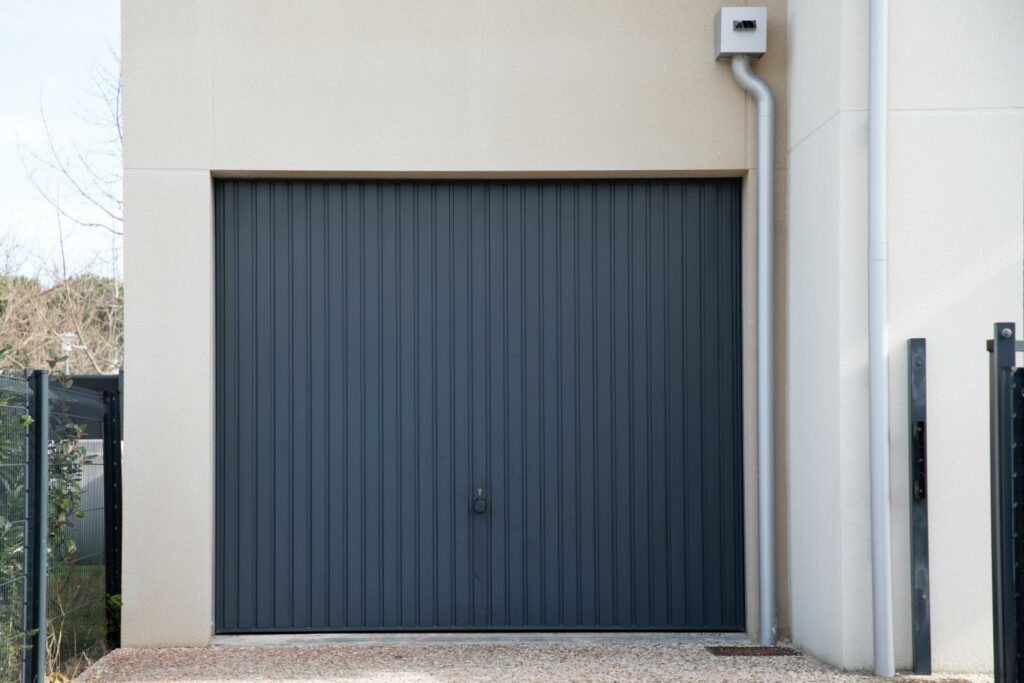
Contents
When it comes to setting up your custom metal garage, think of it as assembling the pieces of a puzzle that will safeguard your vehicles and belongings.
From preparing the site to choosing the right size, each step in the process plays a crucial role in ensuring a functional and durable structure.
As you navigate through the essential tips for custom metal garage setup, you’ll uncover key considerations that can make a significant difference in the long-term usability and efficiency of your garage.
Key Takeaways to Metal Garage Setup
- Proper site preparation and foundation considerations are crucial for a successful custom metal garage setup.
- Choosing the right size and seeking professional assembly assistance is essential for meeting current and future needs effectively.
- Prioritize insulation options and security measures to enhance safety, security, and energy efficiency in the garage.
- Implement ventilation strategies, airflow optimization techniques, and regular maintenance practices to maintain a conducive and safe environment inside the metal garage.
Site Preparation
Prepare the site by clearing any debris and ensuring a level foundation for your custom metal garage. Ground leveling is crucial to guarantee the stability and longevity of your structure. Use a laser level or a builder’s level to ensure the site is flat and even. By taking the time to level the ground properly, you’re setting the foundation for a sturdy and durable metal garage that will stand the test of time.
In addition to ground leveling, consider implementing effective drainage solutions to prevent water from pooling around your custom metal garage. Proper drainage is essential in protecting your garage from potential water damage and erosion. You can install French drains or gutter systems to direct water away from the building site. This proactive approach will help maintain the integrity of your garage and prevent costly repairs in the future.
Foundation Considerations
After ensuring the site is flat and level for your custom metal garage, the next critical step involves carefully evaluating the foundation considerations. When it comes to setting up the foundation for your metal garage, attention to detail is key to ensuring the structure’s stability and longevity.
Here are some essential foundation considerations you need to keep in mind:
- Concrete Thickness: The thickness of the concrete slab that forms the foundation of your metal garage is crucial. It needs to be adequate to bear the weight of the structure and any vehicles or equipment stored inside. Typically, a minimum thickness of 4 inches is recommended, but this may vary based on the local building codes and the specific requirements of your garage.
- Drainage Solutions: Proper drainage around your metal garage is essential to prevent water accumulation, which can lead to damage over time. Consider incorporating effective drainage solutions such as sloping the land away from the building, installing a French drain, or adding gutters and downspouts to direct water away from the structure.
- Soil Compaction: Ensuring that the soil beneath the foundation is properly compacted is vital for preventing the settling or shifting of the structure. Proper soil compaction provides a stable base for the foundation, reducing the risk of structural issues in the future.
- Reinforcement: Depending on the size and intended use of your metal garage, you may need to reinforce the foundation with materials like rebar or wire mesh to enhance its strength and durability. Reinforcement helps distribute the weight more evenly, increasing the foundation’s load-bearing capacity.
Choosing the Right Size
To ensure optimal functionality and satisfaction with your custom metal garage, selecting the appropriate size is a crucial decision requiring meticulous consideration. When evaluating size considerations for your metal garage, it’s essential to assess your current and future needs. Think about the number of vehicles you plan to store, additional space for storage or a workshop, and any potential future requirements. Customization options can greatly impact the size of your garage. If you have specific customization preferences like built-in shelves, cabinets, or workbenches, you’ll need to account for these when determining the size of your garage.
Consider the layout of your property when deciding on the size of your metal garage. Measure the available space accurately to ensure that the dimensions of the garage will fit appropriately. It’s crucial to leave some extra room around the garage for maneuvering vehicles and accessing different areas of the garage comfortably.
Moreover, think about the height of the garage. If you have larger vehicles or plan on adding a car lift in the future, you’ll need a taller garage to accommodate these needs. By carefully considering size considerations and customization options, you can design a custom metal garage that meets all your needs and provides a functional and organized space for your vehicles and belongings.
Assembly Assistance
Considering the meticulous customization options and size considerations for your custom metal garage, ensuring seamless assembly assistance can significantly impact the overall functionality and satisfaction of your setup. Expert guidance and professional service are essential for a smooth assembly process. Here are some efficient techniques and time-saving methods to assist you in assembling your custom metal garage:
- Professional Installation: Opting for professional installation ensures that your custom metal garage is assembled correctly and efficiently, saving you time and potential headaches.
- Preparation Assistance: Some services offer assistance in preparing the site for the installation, ensuring a suitable foundation for your metal garage.
- Instructional Support: Clear and detailed instructions provided by experts can make the assembly process easier to follow, reducing the chances of errors.
- On-Site Supervision: Having professionals oversee the assembly process on-site can provide peace of mind and ensure that everything is put together correctly.
Insulation Options
When considering insulation options for your custom metal garage, it’s crucial to assess the different materials available and their respective qualities.
Understanding the installation techniques required for each type of insulation ensures optimal performance and energy efficiency.
Insulation Materials
Insulating your custom metal garage involves selecting the most suitable materials to ensure optimal temperature control and energy efficiency. When considering insulation materials for your garage, here are four options to help you achieve the best results:
- Fiberglass Insulation: A common choice for its affordability and effectiveness in regulating temperature.
- Reflective Foil Insulation: Ideal for reducing heat transfer and enhancing energy efficiency.
- Spray Foam Insulation: Provides a seamless air barrier, enhancing climate control and energy efficiency.
- Rigid Foam Insulation: Offers high thermal resistance, aiding in maintaining consistent temperatures.
Choose the insulation material that aligns best with your energy efficiency and climate control goals for a well-insulated custom metal garage.
Installation Techniques
Are you familiar with the essential installation techniques for optimizing insulation in your custom metal garage?
When it comes to ensuring proper insulation in your metal garage, safety precautions, and equipment setup are paramount. Before starting the installation process, make sure to wear appropriate safety gear, such as gloves and goggles.
Begin by weatherproofing any gaps or cracks in the walls to prevent heat loss. Insulate the walls and ceiling using materials like fiberglass or foam board, ensuring a snug fit to maximize efficiency.
Regular maintenance, such as checking for any signs of wear or tear in the insulation, is crucial for long-term effectiveness. By following these installation techniques and incorporating weatherproofing and maintenance tips, you can create a well-insulated custom metal garage that provides comfort and energy savings.
Security Measures
To enhance the security of your custom metal garage setup, consider installing a robust surveillance system with motion sensors and remote access capabilities. Security cameras and alarm systems can significantly improve the safety of your garage and its contents. Here are some essential security measures to implement:
- High-Quality Security Cameras: Invest in high-resolution security cameras strategically placed around your garage to provide optimal coverage of the area.
- Motion-Activated Lights: Install motion-activated lights outside your garage to deter potential intruders and alert you of any movement.
- Smart Alarm System: Opt for a smart alarm system that can be integrated with your surveillance cameras for a comprehensive security solution.
- Remote Access Control: Choose a system that enables you to monitor your garage remotely, allowing you to check on your property at any time.
Ventilation Strategies
To ensure optimal airflow within your custom metal garage, consider implementing airflow optimization techniques. Ventilation is crucial for maintaining air quality and preventing the buildup of harmful fumes or gases.
Installing proper exhaust systems will help keep the air inside your garage clean and safe for your projects.
Airflow Optimization Techniques
Optimizing airflow within your custom metal garage involves implementing strategic ventilation techniques to ensure proper air circulation and maintain a conducive environment for your vehicles and equipment. To achieve this, consider the following:
- Strategically Placed Vents: Position vents to facilitate cross ventilation and regulate airflow effectively.
- Ceiling Fans: Install ceiling fans to promote air movement and maintain consistent temperatures.
- Insulation: Properly insulate walls and ceiling to regulate temperature and enhance energy efficiency.
- Exhaust Systems: Implement exhaust systems to remove fumes and maintain air quality within the garage.
Importance of Ventilation
For optimal functioning of your custom metal garage, effective ventilation strategies are paramount in ensuring a safe and well-maintained environment for your vehicles and equipment.
Proper ventilation design is crucial to prevent the buildup of harmful fumes, moisture, and heat that can damage your belongings. Implementing strategic air circulation techniques such as installing vents, fans, or windows can significantly improve the airflow within the garage, reducing the risk of mold, rust, or other forms of deterioration.
Proper Exhaust Systems
Proper ventilation in your custom metal garage necessitates the implementation of effective exhaust systems to maintain a safe and well-regulated environment for your vehicles and equipment. To ensure optimal exhaust maintenance and ventilation design, consider the following:
- Install a high-quality exhaust fan to efficiently remove fumes and pollutants.
- Regularly inspect and clean exhaust ducts to prevent clogging and maintain airflow.
- Implement a ventilation system that promotes proper air circulation throughout the garage.
- Consider incorporating carbon monoxide detectors for early detection of harmful gases.
Maintenance Guidelines
To ensure the longevity and performance of your custom metal garage, consistent maintenance is crucial. Regular cleaning is essential to keep your metal garage looking pristine and to prevent the buildup of dirt and grime that can lead to corrosion. Begin by sweeping the floors and wiping down surfaces with a mild detergent to remove any accumulated debris. Pay special attention to corners and crevices where dirt tends to accumulate.
In addition to regular cleaning, rust prevention is paramount in maintaining your custom metal garage. Inspect the metal surfaces regularly for any signs of rust or corrosion. If you spot any areas of concern, address them promptly by sanding down the affected area and applying a rust-resistant primer and paint to prevent further deterioration.
Furthermore, lubricating moving parts such as hinges, locks, and tracks will help ensure smooth operation and prevent premature wear and tear. Use a silicone-based lubricant to keep these components functioning optimally.
Lastly, inspect the weather-stripping and seals on your garage doors to ensure they’re intact and provide a proper seal. Replace any damaged weather stripping to prevent water infiltration and maintain energy efficiency.
Summary
Ensuring proper site preparation, foundation considerations, choosing the right size, assembly assistance, insulation options, security measures, ventilation strategies, and maintenance guidelines are essential for a successful custom metal garage setup.
By following these tips with precision and expertise, you can create a durable and functional space that meets your specific needs for years to come. Remember to prioritize quality and attention to detail throughout the process for optimal results.
Recent Posts
5 Best Durable Metal Garages for Longevity
Imagine your garage as the backbone of your property, supporting everything from tools to vehicles,
3 Tips for Durable Metal Garages
Is it true that the longevity of your metal garages hinges on just a few
Why Choose Versatile Metal Options for Storage?
It’s interesting how you might find yourself needing a reliable storage solution just as you’re




